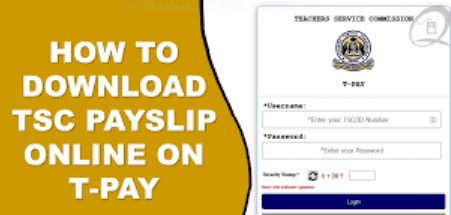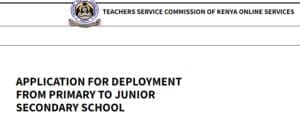KENYA EDUCATION MANAGEMENT INSTITUTE
TEACHER PROFESSIONAL DEVELOPMENT PROGRAMME
TPD INTRODUCTORY MODULE
DAY 1 PRESENTATIONS
KEMI/2021/TPD
How to access the eLearning
platform
KEMI/2021/TPD
Preamble
- KEMI will utilize a blended approach to deliver the Diploma in
Education Leadership and Management course. - The approach involves physical meetings and online sessions.
- The online sessions will be done both synchronously through video
conferencing and asynchronously through KEMI eLearning platform
referred to as KEMI Virtual Campus. - For video conferences, applications such as Zoom and Google Meet
will be used. - All learning resources( including notes) will be posted on the
eLearning platform. - Once enrolled in a course on the eLearning platform, you will be
able to access the course 24/7
KEMI/2021/TPD
- To log into KEMI Virtual Campus, you first
need to understand the log in credentials. - You will use your registration number
- Below is a sample registration number:
KEMI/2021/TPD
Acronym for course in which
you are registered i.e. teacher
Professional Development(TPD)
TPD1 / 2021/1
County code
153
Year of registration Y PF or ID
NOTE: YOU MUST USE THE COUNTY CODE AND TSC NO OR PF NO THAT YOU USED TO REGISTER FOR THIS COURSE
KEMI/2021/TPD
Accessing the eLearning
platform
Step 1:
Click on this
link: https://elearning.ke
mi.ac.ke
OR
On your web browser
type:
KEMI/2021/TPD
Step 2: To log into KEMI Virtual Campus
USERNAME: use your regist
number in lower case(small letters) E.g.
| tpd1/2021/16/253153 |
PA use your registration no in Upper case ( capital letters) E.g.
KEMI/2021/TPDPD1/2021/16/273153
Step 3: Click on Log in
Click on “Log in” after typing your
username and password KEMI/2021/TPD
Step 4: Complete your profile by providing the information
required on the form below
Note: the fields on the form
Your name will appear here
KEMI/2021/TPD
marked with * are mandatory
and must be filled before you
| can proceed |
Step 5: Update your profile
Click here to upd ofile
information KEMI/2021/TPD
Step 6: To access the course
Click on the icon “site home”
KEMI/2021/TPD
Step 7: Accessing your courses/modul
This page will display the “course
categories”. Click on the “Teacher
Professional Development Program”
KEMI/2021/TPD
Step 8: Accessing the TPD Module
Click on the Teacher Professional
Development Introductory Module
KEMI/2021/TPD
The general structure of a module resources
Module overview: Gives an introduction of the module and
the expected learning outcomes
- Chapter introduction
– Presentation in PDF( this is a downloadable file that can be
saved on an external device such as a computer or flash disk)
– Unit activities and resources: Each unit consists of some
activities and case studies that the course participants will be
expected to undertake. Each activity consists of instructions on
what is expected from the course participant
– Module assignment: This is the end of module assignment
which is will be submitted for assessment. Details on how the
end of module assignment will be undertaken, will be provided
during tutorials.
KEMI/2021/TPD
KEMI/2021/TPD
Sample Resources
KEMI/2021/TPD
How to access a presentation (notes)
- Click on the presentation that you want to
read:
KEMI/2021/TPD
The power point presentation will open and you can either read it “online” or you can “download” it so that you can read it “off line”
KEMI/2021/TPD
|
How to post your “response” to an activity
- To view th it
KEMI/2021/TPD
This will display the activity or case study. It will als
indicate the submission status
Scroll to the bottom of the page
KEMI/2021/TPD
To respond to the activity, click on “add
submission”
KEMI/2021/TPD
- “ dialogue box” will open where you will be able to either
type your answer, upload a file or both.
- Note that you will be provided with instructions on what is
required, - If you are to upload a file, it should not exceed 2MB.
- To submit your response, click on “save changes”
KEMI/2021/TPD
How to take part in a discussion forum
- Click on “online discussion”
KEMI/2021/TPD
Read through the discussion topic and scroll to the
bottom of the page
KEMI/2021/TPD
- To take part in the discussion click on “reply”
- A dialogue box will appear where our can type in y
response.
To post your response, click on “submit”
You should also go through other participants’ responses and comment on the them by simply clicking on “reply”
This way, the course participants can be able to engage in a lively online
KEMI/2021/TPD
| discussion |
Click “here” to upload your assignment
Click on “save
KEMI/2021/TPDyour assignment
E-LEARNING ONLINE
ETIQUETTE
- The effective use of the eLearning requires all users to
observe some dos and don’ts. - Below are guidelines s on how to behave while online:
- Logging in: Always Log into your KEMI Virtual Campus account
using your user name and password.
- Logging out: If using a shared computing device such from a
or a cyber café, ensure that you have logged out at the end of
each session.
iii. Your online profile: this should be a picture of the user and
should look professional.
- Don’t Assume Privacy: anything posted on the eLearning
platform can be read by others. Only post what you are
expected to post and do not reveal unnecessary personal
information
KEMI/2021/TPD
- Avoid Offensive Comments: avoid offensive comments in
your online communication especially on the discussion
forums. - Don’t Shout: Remember that when you type in all capitals,
your communication comes across as shouting. Some people
think it makes their message easier to read, but that isn’t the
case. Use a font size and style that is easy on the eyes when
read in standard case letters.
KEMI/2021/TPD
Conclusion
- We wish you all the best as you undertake this
course. - Let us enjoy learning together as we utilize
technology in the process. - Contact your coordinator if you encounter any
challenges in the use of the e-Learning platform and
we shall walk the journey together.
KEMI/2021/TPD
viii. DON’T buse chat forums and email to communicate:
While you need to be assertive in expressing your needs,
opinions and ideas in class discussions, don’t go overboard!
Sending too many emails to your instructors or classmates
can be overwhelming. Treat email like you’re having an in-
person, back-and-forth conversation.
- Be respectful and responsive: With online communication,
it’s important to understand people might misconstrue what
you said, no matter how carefully you composed it. Be
aware of how you use class discussion boards, whether to
ask a question to the group or make a point about a learning
topic.
KEMI/2021/TPD
TEACHER PROFESSIONAL
DEVELOPMENT (TPD)
INDUCTIONAM
KEMI/2021/TPD/ INTRODUCTORY MODULE
- Teacher Professional development refers to
either formal or informal activities that
registered teachers undertake in order to
continuously improve their pedagogical skills,
management skills and learner outcomes.
- TPD Comprises the full range of educational
experiences designed to enrich teacher’s
professional knowledge, understanding and
capabilities throughout the teacher’s career
Purpose of Teacher Professional Development
- The purpose of TPD programmes is to
continuously equip and improve teachers’
skills, competencies and knowledge for
enhanced learning outcomes in Kenyan
schools.
- The overall objective of the TPD programme is
to professionalize teaching by continuously
developing and improving teachers’ skills,
competencies and knowledge in line with the
21st Century core competencies aimed at
enhancing the provision of quality education.
Overall objective
- The overall objective of the TPD programme is
to professionalize teaching by continuously
developing and improving teachers’
competencies in line with the 21st Century
core competencies aimed at enhancing the
provision of quality education.
Specific objectives
- Enhance a culture of life-long learning of teachers,
trainers and instructional leaders;
- Promoting institution-based professional learning
practices communities of practice;
iii. Equipping teachers and instructional leaders with
21st century skills;
- Enhance the capacity for teachers, trainers and
instructional leaders’ competencies in creating
supportive, safe and healthy learning environments.
- Promote the adoption of Competence Based
Curriculum by teachers, trainers and instructional
leaders.
Specific outcomes of TPD
These include: –
- Inculcating a culture of life-long learning of
teachers and instructional leaders. - Fostering personal and professional growth of
teachers and instructional leaders. - Building capacity of teachers and instructional
leaders as action researchers in their practice. - Developing capacity of teachers and instructional
leaders as reflective practitioners.
- Enabling teachers to enhance knowledge, skills
and attitudes in their subjects and pedagogy.
vii. Enhancing teacher’s knowledge, skills and
attitudes in their roles as instructional leaders.
viii. Building capacity of teachers’ and instructional
leaders’ competencies in 21st century skills.
- Enhancing teachers and instructional leaders’
competencies in creating supportive, healthy
and safe learning environment.
Structure of TPD
Consists of three modules
- Introductory module: which will be done by both
instructional leaders and teachers. Will be covered
within one year - Teachers’ module: Consists of six levels. Each level
has five chapters that will provide you with an
opportunity to enhance your knowledge, skills,
attitude and values expected of an effective teacher.
- Instructional leaders’ module: Consists of six levels.
Each level has five chapters that will provide the
instructional leader with an opportunity to enhance
their knowledge, skills, attitude and values expected
of an effective instructional leader.
Mode of Delivery
Blended mode of delivery:
- Face-to-face at sub-county venues during
school holidays and,
- Online learning:
- a) synchronous online lining using video
conferencing apps - b) Asynchronous online learning -e-learning
platform (KEMI Virtual Campus) which will be
accessible 24/7
Learning approaches
Learning approaches
- KWL approach- Know, Want to Learn
- Inquiry based learning
- Discovery
- Reflective Journaling
- Case studies
- Question and answer
- All teachers and instructional leaders
Target Groups for Introductory
registered by TSC
Module
- For one to progress to Teachers Module, you
need to be a TSC registered teacher
possessing a certificate in TPD Introductory
Module
Introductory module
Chapter 1
- Overview of teacher Professional development
- The Kenya Professional Teaching Standards
Chapter 2
- Competence Based Curriculum:
- Rationale for CBC
- The paradigm shift
- The Basic Education Curriculum Framework
- Core competencies
- How learners learn
- Learner centered approaches/ strategies
- Inclusive learning approaches
Chapter 3:
- Types of assessments: As, For & Of Learning
- Formative Assessment Tools/ Strategies
- Assessment Rubrics
- Developing portfolio
Chapter 4:
- Comprehensive school health and Safety
- Health and health Education,
- Health literacy,
- Social determinants of health, and School emergencies
and safety; - Basic first aid, accident, and fire safety
Chapter 5: Instructional Leadership and
Financial literacy
- Concept of Instructional leadership for
teachers, - The roles of teachers as instructional leaders,
- Concept of Financial Literacy: Terminologies &
Applications
Assessment
The following assessments will be used:
- Reflective journals: This is a tool which assesses the
understanding processes, writing abilities, connection to
concepts and personal knowledge. Reflective journal
contains the contents of reflection by a practitioner.
- E-portifolios: A portfolio is a purposeful collection of
learner’s work; shows effort, progress and mastery of a
specified learning outcomes or competencies. It provides
evidence of achievement or mastery over a period of time.
- Synthesis: Participants will be expected to prepare a final
synthesis on their experiences during a particular module/
level
Certification
- Upon successful completion of the
introductory module, a participant shall
be issued with a transcript
- This will be required for your progress
level
TEACHER PROFESSIONAL
DEVELOPMENT (TPD) PROGRAMM
INTRODUCTORY MODULE
INTRODUCTORY MODULE
Teacher Professionalism
Day 1
KEMI/2021/TPD/INTRODUCTORY MODULE
Purpose
To enhance participants’ knowledge, skills, attitudes
and values related to teacher professional
development and building a culture of reflective
practice as a requirement for professional
development
KEMI/2021/TPD/INTRODUCTORY MODULE
Learning outcomes
- Demonstrate understanding of the linkage
between TPD and their career growth - Demonstrate understanding of TPD process.
- Identify professional gaps based on their
competencies. - Identify mitigation measures to address the
identified professional gaps.
KEMI/2021/TPD/INTRODUCTORY MODULE
Teacher Professional
Development and Career
Growth
- Using the “KNOW, W NT TO LE RN”( KWL) approach, state what you
Know and What want to Learn about teacher professional development
and career growth.
- Know͙͙͙͙Some things that I already know about TPD and Career
Growth
͙͙͙͙͙͙͙͙͙͙͙͙͙͙͙͙͙͙͙͙͙͙͙͙͙͙͙͙͙͙͙͙͙͙͙͙͙
- Want to Learn͙͙Some things I would like to learn about TPD and
career growth
͙͙͙͙͙͙͙͙͙͙͙͙͙͙͙͙͙͙͙͙͙͙͙͙͙͙͙͙͙͙͙͙͙͙͙͙͙͙͙͙͙͙͙͙
͙͙͙͙͙͙͙͙͙͙͙͙͙͙͙͙͙͙͙͙͙͙͙͙͙͙͙͙͙͙
Share responses to both sections in on the chat forum
KEMI/2021/TPD/INTRODUCTORY MODULE
- Teacher Professional Development refers to the process
of improving and increasing the capabilities of an
employee. - It is the continuous updating of professional knowledge
and improvement of personal competence throughout
one’s teaching life. - Due to the dynamic environment in which teachers work,
professional teacher development is a prerequisite for
effective teaching and learning in the classroom. - Professional development involves the career long
processes and related systems and policies designed to
enable educators to acquire, broaden and deepen their
knowledge, skills and competences in order to effectively
perform their work roles.
KEMI/2021/TPD/INTRODUCTORY MODULE
Rationale for TPD in Kenya
- The TPD program is designed to cover the pre-
primary, primary and secondary school teachers
and Instructional leaders in both public and
private primary and secondary schools and
teachers in colleges.
- Teacher Professional Development provides
opportunities for teachers to explore new roles,
develop new instructional and leadership
techniques, refine their practice and broaden
their outlook as educators and as individuals.
KEMI/2021/TPD/INTRODUCTORY MODULE
Activity ( 5minutes)
- Read case study 1 and answer the questions
that follow - In plenary present your responses
KEMI/2021/TPD/INTRODUCTORY MODULE
The rationale for TPD in Kenya is based on the
following:
- Constitution of Kenya: Section 43, 1(f)
emphasizes that education is human right
- Vision 2030: Under social pillar, Kenya aspires to
be a Knowledge based economy country - Basic Education Act:, 2013, Part iv talks of free
and compulsory basic education to all learners - Global trends : continuous professional
development is the best practice for professional
growth
KEMI/2021/TPD/INTRODUCTORY MODULE
- Sustainable Development Goals(SDGs) : SDG 4
deals with access to quality education through
quality teaching
- 21st century demands: The learners in the 21st
century are confronted with increasingly complex
social cultural, economic, technological, and
global challenges; teachers therefore must
prepare learners who possess sophisticated,
diversified, and complementary competencies
that will enable them to navigate through these
challenges.
KEMI/2021/TPD/INTRODUCTORY MODULE
Legal Framework for TPD
The Constitution of Kenya (2010)
- Established the Teachers Service Commission
as a constitutional Commission through Article
237 (1) with an exclusive mandate on teacher
management.
KEMI/2021/TPD/INTRODUCTORY MODULE
TSC Act, 2012
- Sections 11(e): mandates TSC to: “facilitate career
progression and professional development for teachers
in the teaching service including the appointment of
head teachers and principals”
- Section 35(1) of the Act that state that: The
Commission shall take all necessary Compliance with
teaching steps to ensure that persons in the teaching
service comply with the teaching standards prescribed
by the Commission under this Act.
KEMI/2021/TPD/INTRODUCTORY MODULE
Section 35(2) (a) and (b) of the Act state that the
Commission shall:
(a) require every registered teacher to undertake
career progression and professional development
programmes as may be prescribed by regulations
made under this Act;
(b) require every registered teacher to take out a
teaching certificate as prescribed by regulations
made under this Act;
KEMI/2021/TPD/INTRODUCTORY MODULE
The Code of Regulations for Teachers (2015)
- Section 48 states that:
(l) Every teacher shall undertake the professional teacher
development programmes prescribed or recommended by
the Commission from time to time.
(2) The Commission shall approve training institutions to
conduct teacher development programmes.
(3) The approved institutions shall issue certificates to
teachers upon completion of the programme.
KEMI/2021/TPD/INTRODUCTORY MODULE
Section 49 states:
- (l) Every teacher who successfully completes a
professional teacher development programme
under regulation 48 shall be issued with a
teaching certificate by the Commission
- (2) A certificate issued under this regulation shall
indicate the effective date and shall be valid for
five years or such other period as may be
prescribed by the Commission.
KEMI/2021/TPD/INTRODUCTORY MODULE
The TPD framework
- TPD is a life-long learning programme organized
in six hierarchical competency levels where each
level takes five years to complete. - At the end of each module, successful teachers
will have their teaching certificates renewed after
every five years,
- TPD Programs shall be undertaken as follows:
– teacher initiated/school based Teacher Professional
Development programmes
– TPD prescribed modules.
KEMI/2021/TPD/INTRODUCTORY MODULE
- At the school level, the instructional leaders
are expected to plan a school initiated TPD
under their supervision.
- At the national level every teacher is required
to undertake the Teacher Professional
Development Programmes as prescribed by
the Commission from time to time.
KEMI/2021/TPD/INTRODUCTORY MODULE
- Upon commencement of the programme, a
teacher will be required to acquire a certificate,
which is renewable every five years.
- New teachers seeking registration will be issued
with two certificates; certificate of registration and
teaching certificate
- After completing a Teacher Professional
Development module, teachers will be eligible for
re-certification and promotion; as the TPD
modules have been anchored in the Career
Progression Guidelines, CPG.
KEMI/2021/TPD/INTRODUCTORY MODULE
- The training will also enhance the teacher’s
knowledge and skills in order to address gaps
in the Teacher Performance and Appraisal
Development, TPAD.
- They will also keep teachers informed, enable
them improve their pedagogical skills and
acquire new, relevant, knowledge in their
teaching areas.
KEMI/2021/TPD/INTRODUCTORY MODULE
THE KENYA PROFESSIONAL
TEACHING STANDARDS (KePTs)
KEMI/2021/TPD/INTRODUCTORY MODULE
KNOW, WANT to LEARN (KWL) about Kenya Professional Teaching
Standards
In preparation for undertaking study of Kenya Professional Teaching
Standards Complete the following
- Know͙͙͙͙Some things that I already know about Kenya
Professional Teaching Standards͙͙͙͙͙͙͙͙͙͙͙͙͙.. - ͙͙͙͙͙͙͙͙͙͙͙͙͙͙͙͙͙͙͙͙͙͙͙͙͙͙͙͙͙͙͙͙͙
- Want to Learn͙͙Some things I would like to learn about Kenya
Professional Teaching
Standards͙͙͙͙͙͙͙͙͙͙͙͙͙͙͙͙͙͙͙͙͙͙͙͙͙͙͙͙͙͙.
Put your responses on the chat
KEMI/2021/TPD/INTRODUCTORY MODULE
- In its endeavor to maintain the teaching standards
of all registered teachers in Kenya, the Teachers
Service Commission has come up with specific
Professional Teaching Standards (KePTS) and
Competency Indicators to measure teachers’
performance.
- The standards define the work of Kenyan teachers
in the context of the 21st century learning, by
setting high quality and effective teaching
expectations that are meant to improve overall
learners’ achievement.
KEMI/2021/TPD/INTRODUCTORY MODULE
- KePTS are meant to provide a consistent and
supportive framework for measuring effectiveness of
Teachers and Instructional leaders against specific
competency indicators.
- The Kenya Professional Teaching Standards for teachers
and Instructional Leaders recognize the key role played
by the two categories in implementing education
policy and making quality learning a reality.
- They express the expectations of an individual who is
entrusted with the task of supporting learners’ learning
in all primary and post primary learning institutions
KEMI/2021/TPD/INTRODUCTORY MODULE
Note:
- TPD training content is based on the Seven (7)
Kenya Professional Teaching Standards
(KePTS).
KEMI/2021/TPD/INTRODUCTORY MODULE
| For Teacher | For Instructional Leader |
| 1. Promotes professionalism
throughout the career |
1. Takes lead in promoting
professionalism throughout the career |
| 2. Has pedagogical content
knowledge and understanding of competency based curriculum and how to implement it. |
2. Takes lead in developing school
vision focused on high quality instruction and learning rooted on competency based curriculum |
KEMI/2021/TPD/INTRODUCTORY MODULE
KePTs Indicators
Activity:
- Identify one KePTs standard and discuss what
would look for to determine whether a
teacher has attained the competencies in that
standard.
- Present your findings in plenary
KEMI/2021/TPD/INTRODUCTORY MODULE
- Facilitator to pick on one standard and discuss the
competency indicators for that standard
Notes on other standards and their indicators are on the LMS
Participants to access the e-leanring platform and read more
about the KePTs standard indicated for both teachers and
instructional leaders
KEMI/2021/TPD/INTRODUCTORY MODULE
Teacher Professional Development Planning
Process
TPD comprises both teacher initiated/school based
Teacher Professional Development programmes and
employer initiated modules
We have already looked at the employee initiated
module
We will now learn how to plan for the teacher
initiated/school teacher professional development
programmes
KEMI/2021/TPD/INTRODUCTORY MODULE
- In order to address the gaps that a professional may
have in terms of the KePTS indicators, a teacher needs
a TPD Plan that can be developed by using the
following steps:
Step One: Teacher/School Self- Assessment Data
- This is the initial stage when a teacher/School
completes self-evaluation to identify learning activities
for termly professional development.
- Using the scale of 1-3, a teacher conducts self-
assessment in each of the KePTS to objectively
determine areas of improvement using the rating
shown in table 1.
KEMI/2021/TPD/INTRODUCTORY MODULE
| KePTs
Standard |
Competence
Indicator |
Rating Scale | ||
| 3
My knowledge, skills and attributes in this competence are very strong |
2
My knowledge, skills and attributes in this competenc e are adequate, could be improved |
1
My knowledge, skills and attributes in this competence need to be the focus of my professional development |
||
KEMI/2021/TPD/INTRODUCTORY MODULE
Step 2: Identification of Professional Competence Gaps
- After identifying the Professional Competence gaps, the
teacher proceeds to identify the chapters in the relevant
TPD Module that address the identified gaps. - At this stage, the teacher is expected to set professional
learning goals that must include the following:
– Outcomes of self-assessment data in step one.
– Competency indicators as provided in each of the standards.
– A balance between individual teacher professional goals and
classroom learning curriculum outcomes.
– Actual outcome of professional development.
– Improvement on the gaps identified through self-
assessment.
KEMI/2021/TPD/INTRODUCTORY MODULE
Step 3: Professional Development Action Plan
- Having identified the perceived strengths and areas of
improvement of a teacher and learners learning, the
teacher determines the appropriate chapter of the module
and activity for professional development and action plan.
- The teacher’s action plan should include the following:
– Intended professional development goals
– Rationale for professional development goals
– The benefits of the professional development to the learner’s
learning
– The chapter of the module to undertake
– Nature of assessment to attain the professional development
goals
– Information on resources required
KEMI/2021/TPD/INTRODUCTORY MODULE
Step 4: ssessment of Teacher’s ction Plan by
Instructional Leader
- The instructional leader will assess teachers’ action
plans. The assessment of the teacher’s TPD action plan
will ensure that:
– Goals are specific and measurable
– Goals will improve learners’ learning
– Goals are integrated with competency indicators
– Steps of the action plan are clearly outlined
– Action plan is realistic, manageable and achievable
– Assessment strategies towards achieving the goals in the
action plans are appropriate
– Learning resources to accomplish the professional
development are identified
KEMI/2021/TPD/INTRODUCTORY MODULE
Step 5: Development of TPD report
- The instructional leader is required to develop
a TPD report detailing performance gaps of
the teachers and intervention measures to be
undertaken.
KEMI/2021/TPD/INTRODUCTORY MODULE
Planning in TPD Process
STEP FIVE: TEACHER TPD
REPORT
STEP FOUR:
INSTRUCTIONALLEADER
ASSESSMENT
STEP THREE:
PROFESSIONALDEVELOPMENT
ACTION PLAN
FESSIONAL GOAL
SETTING
HER SELF-
NT
KEMI/2021/TPD/INTRODUCTORY MODULE
Extended learning activity
- Study the KePTs and their indicators above and
identify one standard where you feel you currently
require more knowledge and skills
- Following the steps given above, draw a professional
development support plan in one of your teaching
subjects that can address the gap you have identified. - Explain how your plan can be operationalized in a
school based TPD program - Post your responses on the e-learning platform
KEMI/2021/TPD/INTRODUCTORY MODULE







